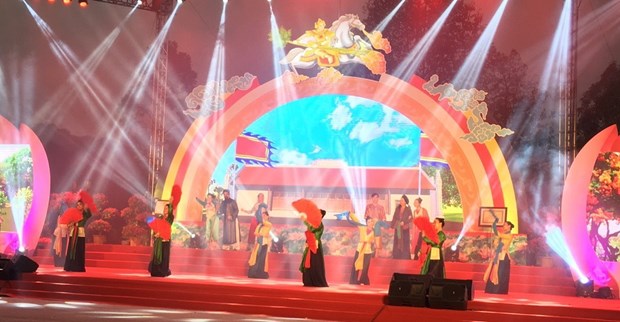Ceremony marks decade of Giong festival as UNESCO heritage of humanity
Held at the national special relic Phu Dong Temple in outlying Gia Lam district's Phu Dong village, the celebration featured art performances and a display of local traditional products.
Speaking at the event, Nguyen Duc Hong, Vice Chairman of the Gia Lam People’s Committee, said the district will continue its effort to preserve of promote the festival and the temple.
 |
He unveiled the local plan of building Phu Dong village into a tourism destination of the capital city in 2021, focusing on the local key products of eco, agricultural, and cultural tourism.
Giong festival is held annually between the seventh and ninth day of the fourth lunar month to commemorate Saint Giong, a local hero who sacrificed his life to defeat invaders. It is celebrated with processions, rituals and performances.
The Vietnam Culture and Art Sub-Institute said “The festival follows a format written in an ancient book called Hoi Le (Festival Regulations), which was passed down through the generations.”
The main day of the event is the last day of the festival, when flags are carried from the Mother Temple to the Upper Temple and sacrifices are made. People perform ritual dances and songs, while battles against the invaders are re-enacted.
In 2010, UNESCO recognised Vietnam’s Giong festival held at Phu Dong Temple and at Soc Temple in Hanoi’s Soc Son district as Intangible Cultural Heritage of Humanity.
The recognition of UNESCO has led to a series of research on its cultural and historical values as well as the promotion of the heritage on the media. Nearly 72 billion VND (3.1 million USD) have been invested on restoring the Phu Dong Temple and building necessary infrastructure serving the festival in Gia Lam.

